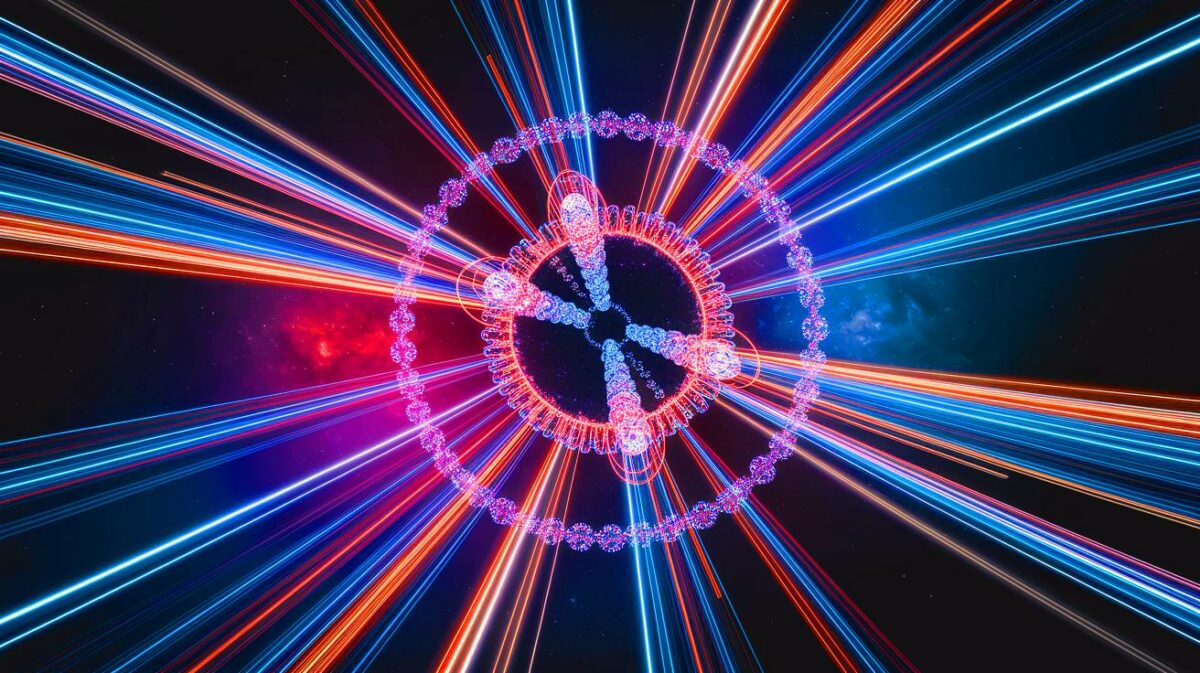| IN A NUTSHELL |
|
Quantum physics continues to amaze us, challenging our understanding of the microscopic world. A groundbreaking study has recently measured, for the first time, the speed at which quantum entanglement occurs—a phenomenon previously believed to be instantaneous. This research, published in the prestigious journal Physical Review Letters, paves the way for significant advancements in quantum computing and encryption. By exploring these microscopic interactions, scientists are uncovering the intricacies of particles that could revolutionize the way we think about data security and computational processes.
Measurement in Attoseconds: A New Era of Precision
Current technological achievements grant us access to phenomena that once seemed beyond reach. The concept of attoseconds plays a crucial role in this advancement. To offer some perspective, light travels merely the thickness of a human hair in one attosecond. These ultra-precise measurements allow scientists to track electron motion and gain a better understanding of electronic dynamics on a quantum scale. The ability to measure in attoseconds marks the dawn of a new era, where we can observe and analyze the quantum world with unprecedented accuracy.
Such precision is not just a scientific triumph but a cornerstone for future technological developments. By understanding quantum interactions on such a minute scale, we can potentially harness these phenomena for practical applications, including faster and more secure data transmission. The implications of this level of measurement extend beyond theory, promising tangible improvements in various technological fields.
Quantum Entanglement: A Mysterious Connection Between Particles
Quantum entanglement is a fascinating concept: two particles appear to be connected, even when separated by vast distances. This principle is fundamental to quantum teleportation. Prof. Joachim Burgdörfer elaborates, “one might say that particles lack individual properties; they only have shared properties.” In this study, conducted by Prof. Joachim Burgdörfer and Prof. Iva Březinová, researchers explore how particles become entangled through high-frequency lasers striking atoms, ejecting an electron and entangling it with another.
This phenomenon challenges the traditional views of physics, suggesting that our understanding of identity and individuality at the quantum level needs reevaluation. Entanglement could lead to revolutionary advancements in various fields, from computing to secure communication, by exploiting the inherent properties of these interconnected particles.
Methods and Results: Zooming in on the Invisible
To accomplish this research, scientists employed cutting-edge techniques such as attosecond streaking and the reconstruction of attosecond beating by interference of two-photon transitions (RABBIT). These methods allow researchers to access key observables in attosecond physics, notably the “zero time” of photoionization. In the experiment, electron entanglement occurs over extremely brief time scales, with an average difference of approximately 232 attoseconds between them.
This meticulous approach not only provides insights into the nature of entanglement but also sets a new standard for experimental physics. By resolving these time scales, scientists can better understand the fundamental interactions at play, opening the door to innovations in both theoretical and applied physics. These findings challenge the notion of instantaneous quantum behavior, suggesting new techniques for manipulating and measuring entangled states.
Future Outlook: Applications and Implications
The potential implications of these discoveries are vast. A better understanding of entanglement could enhance the technologies of tomorrow, particularly for secure data transfer through quantum encryption. Prof. Iva Březinová notes, “we aim to understand how entanglement initiates and what physical phenomena occur at ultrashort time scales.” The study also demonstrates that quantum behaviors are not merely instantaneous, paving the way for new techniques to manipulate and measure entangled states.
As we delve deeper into quantum mechanics, these discoveries will likely transform various industries, from computing to telecommunications. The ability to manipulate such states could redefine how we approach data security, making it nearly impervious to traditional hacking methods. The future of quantum technology seems bright and full of potential for innovation.
Researchers are not stopping here; they are already preparing to deepen their findings. Discussions with several scientific teams are underway to confirm these ultra-fast entanglements and explore their practical applications in various technological sectors. For instance, the study on helium uses a complete numerical solution of the time-dependent Schrödinger equation to analyze inter-electronic coherence, stimulated by an extreme ultraviolet field. Each new discovery in this fascinating universe fuels our desire to uncover the secrets of the quantum world. How will these advancements shape the future of technology and data security?
Did you like it? 4.4/5 (29)









Wow, this is mind-blowing! Can’t wait to see how this changes our world. 🚀
Quantum entanglement sounds like magic! How do they even measure that? 🤔
Does this mean we’re closer to quantum computers being a reality? 🖥️
Is there any risk involved with manipulating quantum particles like this?
How do these findings challenge our current understanding of physics?
Great article, but I’m still skeptical about these “instantaneous” effects. 🤷♂️
So, when can I use quantum encryption to secure my emails? 📧
Quantum teleportation next, please! Beam me up, Scotty! 🚀
Is this related to Einstein’s “spooky action at a distance” concept?
How does this discovery impact the field of telecommunications?
Quantum physics always sounds like sci-fi to me. Can’t wrap my head around it! 🤯
Are there any ethical concerns with advancing quantum technologies?
Can someone dumb this down for me? What does it mean for regular folks?